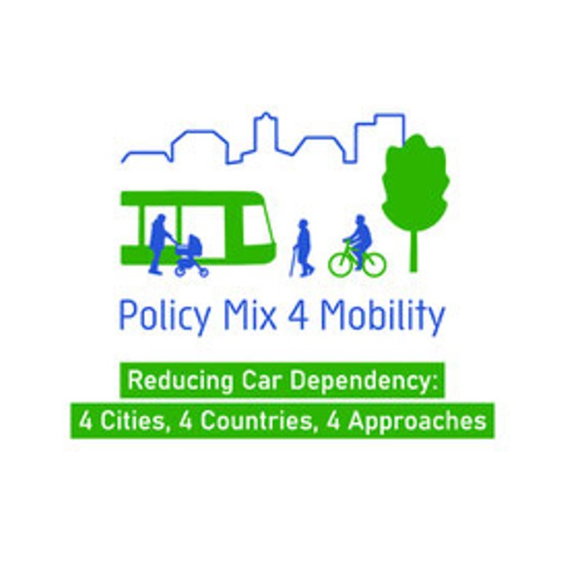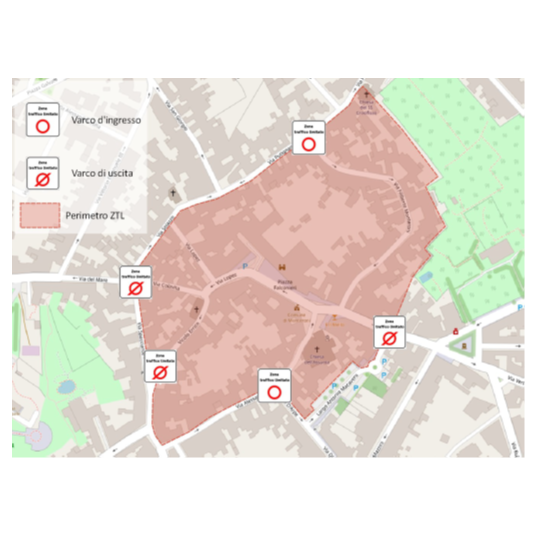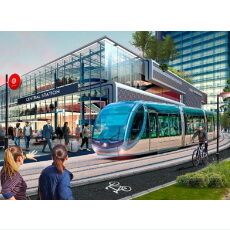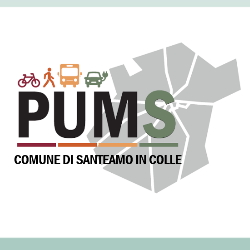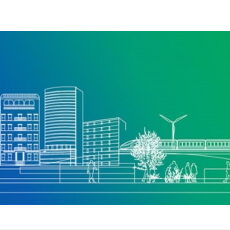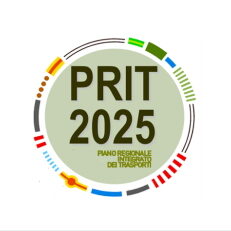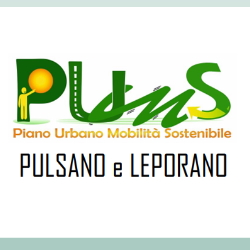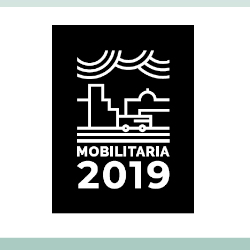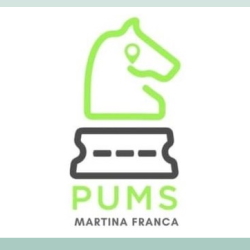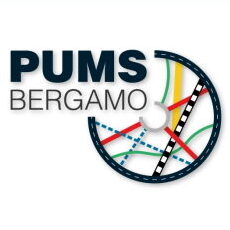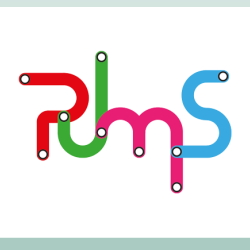MOMOS has been used for several applications to support Sustainable Urban Mobility Plans (SUMP) in Italy, as well as for the analysis of transport policies for sustainable mobility in different European cities.
In more detail, the MOMOS model has been applied to the following projects:
- Diffusing sustainable mobility options and reducing car dependency in urban areas PolicyMix4Mobility aims to create an inter- and transdisciplinary understanding of policy mixes and their effects based on policy packages that promote sustainable mobility practices and reduce car use in urban areas. This work is informed by a novel conceptual framework, bridging qualitative (case studies), quantitative (modelling) and transdisciplinary (urban labs, forum) methodological approaches to assess existing policy mixes and develop prospective ones. The project involves four European cities of different sizes and diverse socio-spatial conditions and policy contexts, located in Cyprus, Denmark, Germany, and Italy. While they differ in terms of progress towards sustainable mobility, but they share the common ambition to reduce car dependency and promote climate-neutral, socially just urban mobility systems. The project will first develop a conceptual basis for a better understanding of policy mixes aimed at reducing car dependency as well as a monitoring and evaluation framework for assessing the direct and indirect effects of such policy mixes. These will inform the empirical analyses performed through case studies in the four cities and the organization of urban labs. The case studies will enable the collection, analysis, and assessment of qualitative and quantitative data about policy mixes to reduce car dependency and their effects on mobility transitions. To improve the understanding of the effects of mobility and transport policy measures with a strategic approach, the project will also apply the MOMOS assessment tool. The Urban labs will develop in each city tools and methods for institutional, procedural, and social innovations, and actions plans for policy mixes to encourage their development and implementation. A key outcome of the project will be the Mobility Policy Mix Toolbox – a strategic resource designed to support cities and policymakers in navigating the complex politics of mobility transitions.The Consortium is led by IOEW (Germany), including TRT and 6 other partners from Cyprus, Denmark, Germany, Italy. TRT contributes to the project as it comes to: Introduction to the project by the coordinator Dr. Florian Kern (Institute for Ecological Economic Research – IÖW)
- Drafting of the Urban Plan of Sustainable Mobility of the Municipality of Monteroni di Lecce(LE) accompanied by verification of subjection to strategic environmental assessment (SEA) The Municipality of Monteroni di Lecce (LE) has entrusted TRT Trasporti e Territorio with the service of drafting the Sustainable Urban Mobility Plan (PUMS). The Plan is financed by the Apulia Region as part of the authority’s commitment to provide municipalities with strategic planning tools for the urban mobility and transport sector. TRT was chosen by the Administration in continuity with the recent work carried out for the elaboration of the General Urban Traffic Plan (PGTU), approved by the City Council in April 2024.Starting from the knowledge of the territory acquired thanks to the previous PGTU, TRT has drafted the PUMS, a Pano document of a strategic nature with a 10-year time horizon, which represents a medium-long term guide capable of orienting the Administration’s decisions in the field of mobility.The drafting of the PUMS developed through two phases. The first consisted in drafting the Plan’s Guidelines, containing the cognitive framework, the SWOT analysis and, consequently, the Plan’s objectives and strategies, including the description of indicators. The cognitive framework included the superordinate planning framework, the analysis of mobility demand, infrastructure and services endowment, the position of traffic attractors as well as information related to mobility impacts (pollutants, accidents, motorisation rate, etc.).The second phase included the identification of alternative Plan scenarios, monitoring, cost estimation, the results of the Plan Scenario assessment through the implementation of the strategic model MOMOS (MOdello per la MObilità Sostenibile) with the consequent extraction of transport, environmental, social and economic sustainability indicators. MOMOS was applied to assess, in an aggregate way, the impact of the mobility policies introduced, such as the expansion of the bicycle network, new public transport services, the ZTL, speed moderation, etc.. A screening report was also prepared to accompany the second phase, in order to evaluate the exclusion of the Plan from the SEA process by the competent authority. Monteroni SUMP was adopted with resolution n. 136 in the 8th on November 2024 by the Town Government Council and approved with resolution n. 6 in the 12th February 2025 by the Town Council.
- Update of the study on the “Costs and Benefits of the Urban Mobility Transition” The Costs and Benefits of the sustainable urban mobility transition study was carried in 2021 by TRT with the purpose of assessing the impacts of different sustainable urban mobility scenarios in European cities while quantifying the costs and benefits of this transition in 2030 and 2050. The current study consists in an update and improvement of the previous analysis, aiming to: Refine the input data, the intervention levels and targets of the policy measures of the transition scenarios and their timeline of implementation. Improve and enlarge the policy measures applied to the scenarios Run a new modelling simulation to quantify the expected costs and benefits of the sustainable urban mobility transition in European cities by 2030 and by 2050. Draft specific policy recommendations for practitioners. Provide a set of relevant datasets for the development of an interactive tool The calculation is based on an improvement and extension of the MOMOS model, which allows to assess the impacts of different mobility transition scenarios. The quantification of results is applied to 12 city prototypes (representing more than 780 cities in EU27), considering different dimensions (small, medium, and large cities) and geographic areas (southern, central/western, northern, and eastern Europe). The project will consider three potential scenarios, based on a combination of policy measures taken from key EU initiatives and related to the specific emphasis of each scenario. The available measures are of a different nature and comprehensively cover the range of options that cities currently have available to promote the transition to sustainable urban mobility, belonging to eight different policy groups: Shared Mobility; Innovative mobility services; Vehicle fleet & Charging Infrastructure; Transport Infrastructure; Transport avoidance and behaviour; Pricing Schemes; Traffic management and control; urban logistics. The outputs of the study will consist in a series of indicators from three domains, estimated at base year 2022 as well as at future years 2030 and 2050: transport (modal split, car ownership), environment (CO2 and air pollutant emissions, fatalities), and economic (city costs, revenues, user and freight operator costs, and externalities). Also, building on the results for the 12 city prototypes and on a policy effectiveness comparison of the different groups of policy measures, a series of recommendations focused on mobility practitioners will be provided. For more information: Previous contract
- Drafting of the Sustainable Urban Mobility Plan (PUMS) for the Municipality of Santeramo in Colle (Metropolitan City of Bari) accompanied by Strategic Environmental Assessment The Municipality of Santeramo in Colle (BA) has commissioned TRT Trasporti e Territorio to develop its Sustainable Urban Mobility Plan (PUMS). This initiative is co-financed and supervised by the Puglia Region, reflecting the region’s commitment to equipping municipalities with strategic urban mobility and transportation planning tools. The SUMP serves as a strategic medium-to-long-term guide for the Administration’s mobility-related decisions. It integrates local, regional, and broader planning tools, ensuring cohesive and comprehensive urban mobility management. Santeramo in Colle, with a population of approximately 25,000, has a low population density of 178 inhabitants per square kilometer. The urban center houses 93.1% of the residents, leaving much of the surrounding area sparsely populated. The compact urban center, with its slight elevations, offers an opportunity to promote sustainable and healthy mobility behaviors, encouraging citizens to reduce car use. The PUMS development process aligns with European, national, and regional guidelines and is divided into three phases: Phase I – Knowledge Framework Phase II – Guidelines, with the objectives and strategies of the Plan Phase III – Plan Document, with the definition of SUMP alternative scenarios, the evaluation using the MOMOS strategic model, the cost estimation, and the monitoring plan. Participation is a fundamental aspect of the SUMP drafting process and will be present in all phases of the Plan’s development. Additionally, the drafting process of the SUMP will be accompanied by the Strategic Environmental Assessment (SEA) and the environmental impact assessment (VIncA), the latter being necessary because the Municipality of Santeramo in Colle is located within two Natura 2000 protected areas network.
- Modelling European cities’ pathways to zero-emission urban mobility by 2030 through the development of potential transition scenarios This study modelled European cities’ pathways to zero-emission urban mobility by 2030 through the development of potential transition scenarios. Each scenario is built on different set of sustainable policy measures, whose impacts is quantified through a series of indicators as output results. The assessment is realized through MOMOS a quantitative tool which allows to simulate and quantify in a simplified way the impacts of potential mobility transition scenarios in cities. Four potential scenarios, each one with a different focus and a specific combination of policy measures, have been simulated and applied to five real European cities: Brussels, Madrid, Milan, Greater Manchester, and Warsaw. An in-depth data collection defined and reproduced the city characteristics at the base year, including socio-demographic aspects as well as mobility features. The main output of the study consisted in the calculation of the CO2 emissions reduction associated to each scenario. Besides that, a series of core indicators have also been calculated for the 2030 horizon. These included: modal split, public and private fleet electrification, car ownership, road safety, and air pollutants emissions. In addition, multi-criteria cost effectiveness analysis estimated costs and benefits associated to the four transition scenarios. Such analysis was based on four components: (implementation and maintenance) costs of the policy measures, environmental benefits, users’ transport costs and travel time, and revenues for the public administration and service providers. For more information: Clean cities website on the (E)Mission zero study, including technical reports and factsheet results. Briefing of the (E)Mission zero study Interactive tool to explore results of the (E)Mission zero study
- Study on costs and benefits of the sustainable urban mobility transition The study had the objective to assess the impacts of different sustainable urban mobility transition scenarios, producing a quantitative analysis of their costs and benefits for European cities by 2030 and 2050. The calculation is based on an improvement and extension of the MOMOS model, which allows to calculate the costs and benefits of the transition through a set of indicators. To take into account differences among 779 European cities, the quantification of results has been applied to 12 city prototypes, which considered different dimensions (small, medium, and large cities) and geographic areas (southern, central/western, northern, and eastern Europe). The project considered three potential scenarios, based on a combination of policy measures taken from key EU initiatives: Promote and regulate, based on changing behaviour and promotion; Plan and build, focused on investments in technology and infrastructure; Mixed, which combines policies from the previous two scenarios. The three scenarios were built on specific combinations and applications of policy measures, belonging to six different policy groups: Shared Mobility and Demand Management; Innovative Services; Green Public Transport and Logistics Fleets & Charging Infrastructure; Pricing Schemes; Transport Infrastructure; Traffic management and control. The outputs of the study consisted in a series of indicators from three domains: transport (modal split, car ownership), environment (CO2 emissions, fatalities), and economic (city costs, revenues, and externalities). Also, a policy effectiveness comparison determined the best policy measures, in terms of associated cost/revenues and CO2 reduction, according to different city sizes. For more information: Full results of the study can be explored with this interactive tool. The study’s Full Report can be downloaded here. Additional info can also be found on the EIT Urban Mobility website For more information: New contract Interactive tool to explore results of 2021 study 2021 study’s Full Report EIT Urban Mobility website on 2021 study
- Drafting of Operational tools guidelines for the promotion of sustainable mobility measures. PRIT (Integrated Regional Transport Plan) guidelines update The support provided by TRT for the drafting of the Guidelines to boost sustainable innovative mobility in the urban areas is part of the definition of the new Integrated Regional Transport Plan (PRIT 2025) of the Emilia-Romagna Region. The objective of the guidelines prepared by the Regional Administration Territorial Planning Service is to provide support to local administrations in the their preparation of Sustainable Urban Mobility Plans (SUMP), specifically guiding them on matters like: The need of collecting quantitative and qualitative data in order to develop a framework to support the analysis the mobility demand trends and characteristics, also taking into account the pandemic crisis. The analysis of innovative tools and actions related to the concept of sustainable mobility planning. These include ITS tools, use of big data in the context of mobility forecast studies, dissemination and enhancement actions related to sharing mobility and self driving vehicles. The development of collective services more suitable for intercepting the real demand for mobility, such as on-demand transport services and Mobility as a Service models. The guidelines presented in June 2021 are accompanied by an evaluation structure (MOMOS Model) capable of recognizing the sustainability dimension of the covered actions. For more information: It is possible to download the technical fact-sheets on the Regional government website (only available in Italian) The Emilia-Romagna Region presented the results of the project in the conference “Planning transport: PRIT2025 and sustainable mobility” held on 10 November 2022 in the Aula Magna of the regional headquarters. The slides and the conference program are available here.
- Drafting the Sustainable Urban Mobility Plan (SUMP) of the Municipalities of Pulsano and Leporano (Taranto, Italy) The Municipality of Pulsano (TA) has entrusted TRT Trasporti e Territorio with the drafting of the Sustainable Urban Mobility Plan (SUMP) of the Municipalities of Pulsano and Leporano. The Plan is co-financed and supervised by the Puglia Region as part of a wider regional programme linked to the development of SUMPs. TRT worked in synergy with other consultants in charge of participation activities as well as the preparation of the GIS platform dedicated to planning activities. With a total population of about 20,000 inhabitants, Pulsano and Leporano are the first two municipalities south of the city of Taranto, with which they develop a strong interdependence on the mobility front. In addition to the two inland historic urban centres, there are several marinas and tourist resorts along the 12 km of coastline, which determine a strong seasonal demand for transport. The drafting of the Plan has been developed in three distinct phases: after the reconstruction of the cognitive framework and the analysis of the current situation (phase 1), the objectives and strategies were first defined (Guidelines – phase 2) and then the single measures and policies for sustainable urban mobility were elaborated and detailed and then merged into the Plan Proposal (phase 3). The process of drafting the PUMS of Pulsano and Leporano took into account and integrated the indications of the European, national and regional PUMS guidelines. TRT used its own MOMOS strategic model for scenario assessment
- Electric mobility, a simulation in four metropolitan areas On April 2019 the second edition of the “MobilitAria” report was presented in Rome, in the national headquarters of national railways “Ferrovie dello Stato”. This study, written by Kyoto Club, CNR-IIA (National Council for Research, Atmospheric Pollution Institute – Consiglio Nazionale delle Ricerche, Istituto sull’Inquinamento Atmosferico) with the collaboration of the Transport Research Institute Isfort, presents data on urban mobility and air quality in 14 cities and Metropolitan Areas in Italy for the period 2017-2018.. TRT contributed to a specific section of this edition, reporting the results of the estimated impacts of measures promoting the uptake of electric mobility, focusing both on transport and environmental indicators. The simulations have been performed considering four Metropolitan Cities in Italy (Turin, Milan, Bologna and Bari), implementing applications of the MOMOS model (MOdello per la MObilità Sostenibile) developed by TRT. Selected measures supporting the uptake of electric mobility, such as electric charging stations, access regulation, parking pricing, EV car sharing, etc., have been simulated in the test scenario at 2030, comparing output indicators with respect to a Reference scenario (building on trends of the EU Reference scenario 2016).
- Sustainable Urban Mobility Plan (SUMP) of Martina Franca The Municipal Administration of Martina Franca, with its 49,000 residents, has shown particular interest to the issue of sustainable mobility and has decided to undertake the process of adopting a SUMP despite the fact that, according the the Italian Ministry of Transport guidelines (Decree 4 August 2017), they are compulsory only for municipalities with a population greater than 100,000 inhabitants. Launched in November 2018, the study provided: The setting up of data and documents relating to initiatives and going-on projects developed by the Municipality; The definition of objectives, strategies and targets; The selection – in agreement with the Municipality – of the measures of the SUMP Proposal together with the identification of the main indicators for evaluation and monitoring; The qualitative-quantitative assessment of environmental, social and economic sustainability of the SUMP measures through the application of the strategic model MOMOS (Model for Sustainable MObility) tool developed by TRT. A founding element of the Plan preparation process was the participatory process, which included an online survey aimed at residents and city users (with the dual purpose of characterizing the demand for mobility and knowing the needs and requests of those who moves daily to the city) and participation of TRT staff in Municipal Assemblies and with citizenship. [tw_button icon=”” link=”https://www.trt.it/archivio-progetti/” size=”small” rounded=”false” style=”flat” hover=”default” color=”#223468″ target=”_self”]Projects[/tw_button]
- Sustainable Urban Mobility Plan (SUMP) of Bergamo (Italy) and related SEA With 120,000 residents, Bergamo is the fourth largest city in Lombardy. According to the origin-destination survey carried out by Regione Lombardia in 2014, 366,000 journeys daily affect the municipal territory. The drafting of the SUMP of Bergamo guaranteed consistency with the methodology suggested by the European Commission (www.eltis.org) and with the guidelines issued by the Italian Ministry of Transports (Decree 4 August 2017). Started in July 2018, the work has been organised in four phases:: background analysis of the mobility-related framework and its environmental, social and economic impact in Bergamo; evaluation of the current scenario (diagnostic framework and SWOT analysis) and subsequent definition of the general and specific objectives system as well as measurement indicators; elaboration of the SUMP, including the identification of alternative scenarios, the selection of the related policies and measures, the preparation of a monitoring plan for the ex post evaluation of the plan; acceptance and approval process. The plan has been prepared with the support of a traffic simulation model thus allowing for a detailed technical, environmental and economic evaluation. A tool for strategic evaluation (MOMOS, entirely developed by TRT) has been also used. A fundamental element of the SUMP has been the participatory process, which has included a survey on mobility habits addressed to those who live, work and study in Bergamo and four thematic focus groups. The sustainability of the SUMP has been supported by a Strategic Environmental Assessment (SEA) and an assessment of the effects of the Plan for the naturalistic Site of Community Importance (SCI) named «Boschi dell’Astino e dell’Allegrezza». The SUMP of Bergamo has been accepted by the City Council on 16/05/2019 and eventually approved om 05/07/2022. For more information Documents available on comune.bergamo.it (only available in italian) “Sustainable Urban Mobility Plan for Bergamo and its functional area”. Case study published on Eltis Platform
- Preparation of the Urban Mobility Plan of the city of Prato in Italy TRT, as a result of a tendering procedure, has been selected by the City of Prato to support their offices in the preparation of the SUMP. The Plan takes as reference methodology the “SUMP guidelines” prepared by the EU Commission (with the contribution, among others, of TRT). The SUMP process has been developed in four steps: background analysis of the mobility-related framework and its environmental, social and economic impact in Prato; identification of the strategies for the construction of the SUMP scenarios, as a result of the background analysis, the selected objectives and the priorities raised through public listening (surveys and thematic/territorial focus groups); design of two different scenarios: reference solution and SUMP scenario – the latter is characterised by a set of coherent transport measures aimed at achieving specific objectives; evaluation procedure, implementing a ex ante transport model (AIMSUN) and a policy evaluation procedure (MOMOS) derived from the Urban Road Map 2030 tool. The SUMP of Prato has been presented to the local community, stakeholders and decision makers in October 2016. The Plan has been approved by the City Council in June 2017. TRT was also responsible of the drafting of the Parking Master Plan and the Urban Traffic Plan of the city of Prato In 2022, TRT also drafted Prato’s e-Mobility Plan and the SUMP monitoring report in accordance with the indicators of DM 396 of 28/08/2019. For more information (Only available in italian) Official SUMP webpage hosted in the website of the Municipality. It contains all the information related to the SUMP process in Prato Webpage where project deliverables and annexes can be found Link to download the final SUMP document

